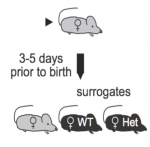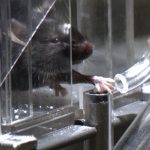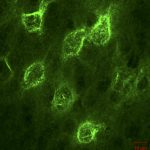Neurodevelopmental disorders such as Autism Spectrum Disorder and Rett Syndrome are characterized by atypical social communication and motor features, among other phenotypes. These disorders are caused by gene mutations that ultimately give rise to atypical synaptic connectivity and plasticity during early development.
Recent genetic sequencing studies of patients and families have identified up to ~1000 genes associated with ASD. How these genes (individually or together) contribute to the observed myriad of sensory, motor and social behaviors during postnatal development, and further on through adolescence and adulthood remains unknown. Due to the sheer numbers of identified genes and the inherent biological variability in phenotypes (“If you see one child with Autism, you have seen one child with Autism”), we need to utilize integrated approaches across molecules, cells, neural circuits and behavior to identify common motifs and identify effective treatment strategies.
A key challenge then is to model these specific biological contexts and endophenotypes to determine pathogenesis and personalized treatment options.
To this end, we use integrated approaches across molecules, cells, circuits, brain regions and behavior to “connect the dots” between genes and behavior in mouse models of neurodevelopmental disorders.
We develop context-specific paradigms using mouse as a model system to address sensory, motor and social endo-phenotypes in neurological disorders.
 Maternal Behavior Maternal Behavior |
 Motor Behavior Motor Behavior |
 Anatomy & Cellular Analysis Anatomy & Cellular Analysis |